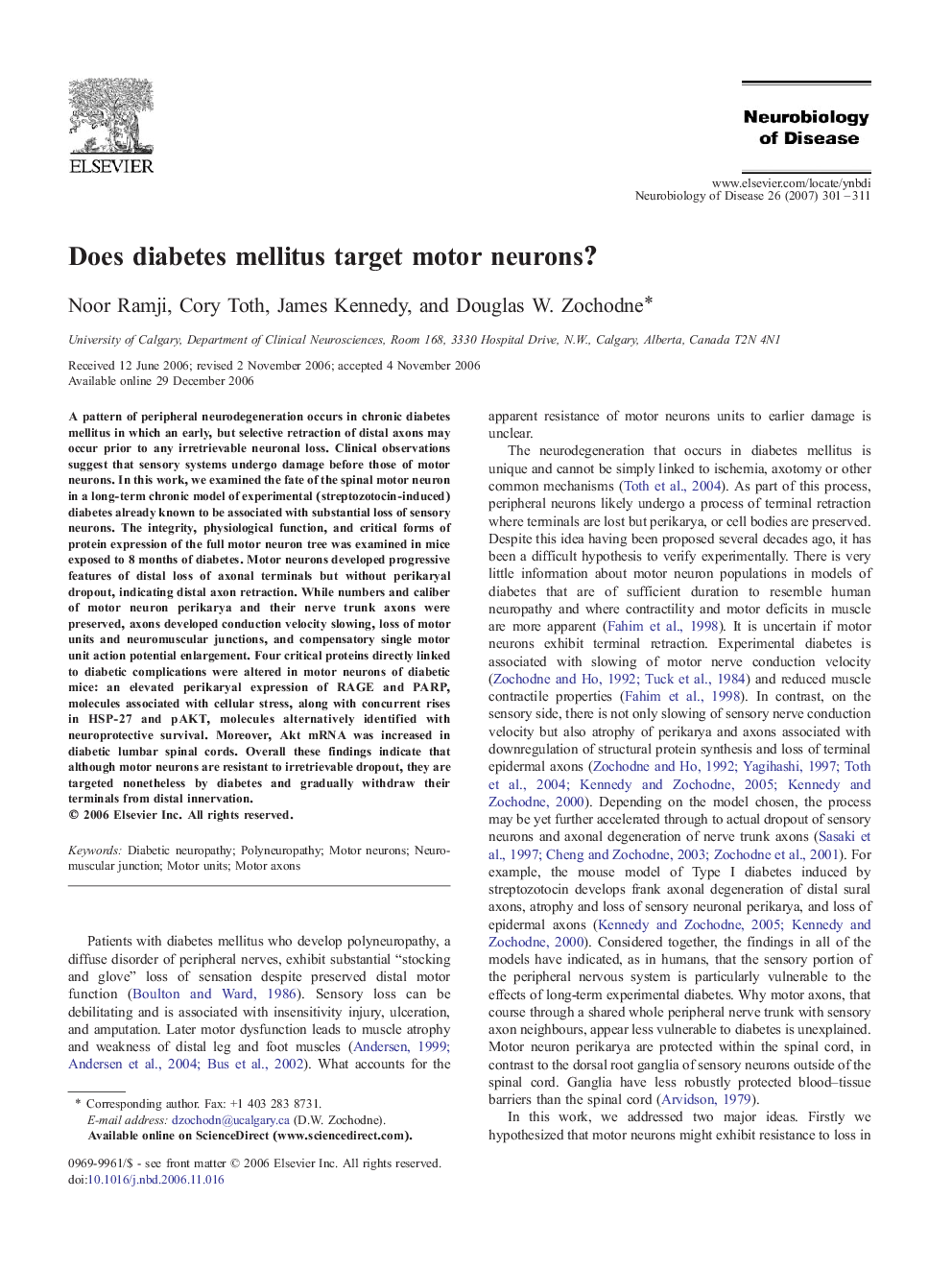| Article ID | Journal | Published Year | Pages | File Type |
|---|---|---|---|---|
| 3070903 | Neurobiology of Disease | 2007 | 11 Pages |
A pattern of peripheral neurodegeneration occurs in chronic diabetes mellitus in which an early, but selective retraction of distal axons may occur prior to any irretrievable neuronal loss. Clinical observations suggest that sensory systems undergo damage before those of motor neurons. In this work, we examined the fate of the spinal motor neuron in a long-term chronic model of experimental (streptozotocin-induced) diabetes already known to be associated with substantial loss of sensory neurons. The integrity, physiological function, and critical forms of protein expression of the full motor neuron tree was examined in mice exposed to 8 months of diabetes. Motor neurons developed progressive features of distal loss of axonal terminals but without perikaryal dropout, indicating distal axon retraction. While numbers and caliber of motor neuron perikarya and their nerve trunk axons were preserved, axons developed conduction velocity slowing, loss of motor units and neuromuscular junctions, and compensatory single motor unit action potential enlargement. Four critical proteins directly linked to diabetic complications were altered in motor neurons of diabetic mice: an elevated perikaryal expression of RAGE and PARP, molecules associated with cellular stress, along with concurrent rises in HSP-27 and pAKT, molecules alternatively identified with neuroprotective survival. Moreover, Akt mRNA was increased in diabetic lumbar spinal cords. Overall these findings indicate that although motor neurons are resistant to irretrievable dropout, they are targeted nonetheless by diabetes and gradually withdraw their terminals from distal innervation.
